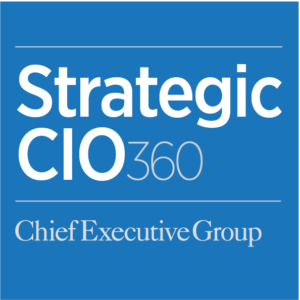CIOs can learn a lot from fantasy football when it comes to talent challenges. Over the last decade, the popularity of virtually pitting personal “teams” of players from across National Football League rosters has exploded into a multi-billion-dollar industry. And fantasy football has grown largely by democratizing data about what happens on football fields and then building social capital around the competition.
It’s no accident that the NFL has encouraged the expansion of fantasy leagues by turning to a machine-learning-enabled business-intelligence service provided by Amazon Web Services to crack open windows for fans into the league’s databases about player performance. It provides dashboards to NFL teams, broadcasters, editorial folks and fantasy-football writers at NFL.com to ask questions, run extremely fast queries and surface the answers.
In similar ways, enterprises of all categories and sizes must transform their workforces and their workplaces by leveraging the democratization of data and an understanding of social capital, not just human capital. That’s how they can truly empower employees with information and connections that will help them become optimally productive.
Start with empowering employees to make better and faster decisions through making data more transparent and accessible to them.
“Knowledge is power, and when only a few people have access to data in an organization, they hold all the insights and decision-making power,” says Dorothy Li, vice president of business intelligence and analytics for Amazon Web Services. “This creates a bottleneck and leaves the rest of the organization in the dark.”
The antidote is to “treat data like an organizational asset, no longer the property of individual departments,” says Rahul Pathak, vice president of analytics for AWS. Making data securely and easily accessible to stakeholders across the organization—not just data scientists or developers—helps improve business outcomes and increases innovation. And it allows organizations to access new insights they’ve never had before, as employees and other constituencies work from what can be called a “single source of truth.”
Consider, for instance, Jack in the Box, which has more than 2,200 company-owned and franchised outlets across the country. It migrated its on-premises data center to the cloud with AWS so that it could create a modernized data infrastructure with a robust ecosystem of tools for individual franchise owners. They access it via a dashboard that analyzes sales, inventories, food safety and labor patterns and use it to improve the customer experience and the bottom line.
And while data democratization helps companies make better use of human capital, they also must extend the optimization of data into the arena of social capital. While human capital is a sort of summarization of what employees know, and their experiences, competencies and capabilities, social capital “is basically how well positioned we are inside of our organizations to leverage that human capital,” says Michael Arena, vice president for talent and development for AWS.
Data- and cloud-enabled organizational network analysis is the way companies can unlock valuable insights into their social capital, including “bonding”—the level of trust that exists within a team or small group—and “bridging” social capital, which measures how much employees are reaching out across teams, functions, departments and even organizations. The requisite information can be gleaned from passive channels such as e-mails or active applications such as wearables including sensor badges that track physical activities.
Practical applications of social capital include understanding the networking behaviors of successful salespeople and synthesizing lessons for others, and how to quickly merge groups on the front end of mergers and acquisitions.
While pioneering organizations were studying social capital pre-Covid, the explosion in remote work because of the pandemic has placed even stronger importance on understanding it.
That’s because, while companies initially reported improved productivity from the virtualization of the office early in the pandemic, there also has been a noticeable erosion in effective networking. There’s been a special challenge posed by remote work to onboarding of new employees.
“We already know that you need to be far more intentional in nurturing relationships and build much more repetition” in today’s environment of remote work and hybrid roles involving physical workplaces, Arena says. “At our core, we are social beings and want to be part of a group.” This situation calls for company leaders to “lean into your people-analytics function now,” Arena urges. “Don’t be responsive; be proactive.”









